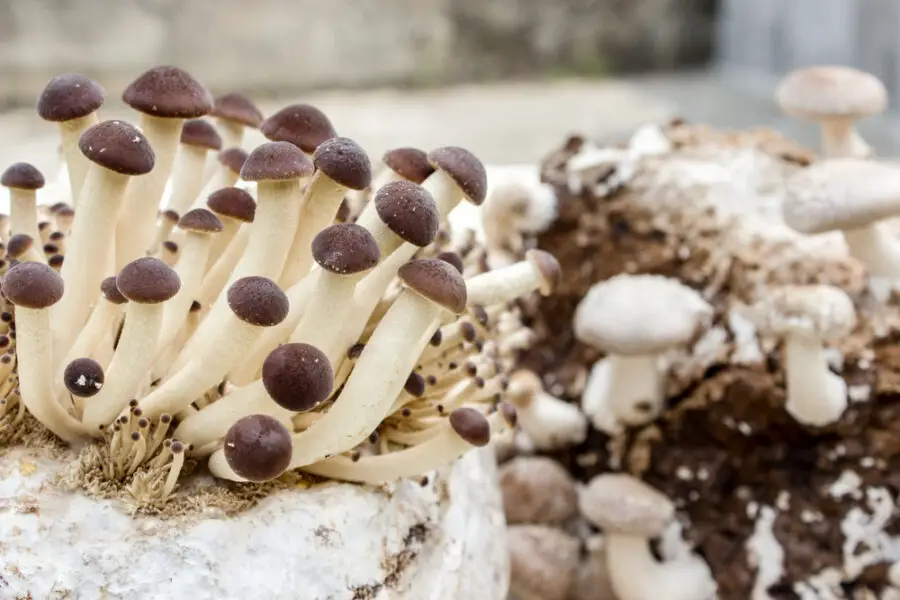Many orange mushrooms are highly dangerous because of the potential amatoxins these mushrooms contain. People can ingest some orange mushrooms safely with only minor problems. However, many species are highly poisonous and can be fatal if ingested. Two common orange species that are edible are the “chicken of the woods” shelf fungus and chanterelles.
The following article will discuss if orange mushrooms are safe to eat, the potential dangers of eating orange mushrooms, and how to identify which orange mushrooms to avoid.
Watch the video above to see examples of the edible orange mushroom, Chicken of the Woods.
Watch the video below to see the most poisonous mushrooms you’d commonly come across while mushroom hunting.
Are orange mushrooms safe to eat?
Chefs and home cooks are strongly advised not to eat orange mushrooms because of the many potential toxins inside them. Some orange mushrooms can be safe. However, others are extremely toxic.
Can orange mushrooms be dangerous?
Consuming any orange mushroom could be fatal, so it is best to avoid them.
According to Encyclopedia Britannica, three of the world’s seven most poisonous mushrooms are orange. These poisonous mushrooms include the conocybe filaris, webcaps (both the cortinarius rubellus and cortinarius orellanus), and the autumn skull cap (galerina marginata).
Can eating an orange mushroom kill you?
Eating some orange mushrooms can be fatal. Orange mushrooms like the Jack-o-lantern mushroom or false morel are considered highly poisonous. If left untreated, the symptoms can lead to coma or death.
When eating orange mushrooms, you must carefully consider the type of mushroom you are ingesting in your body. While some mushrooms carry extremely harmful toxins, others only contain minor toxins.
Are all orange mushrooms poisonous?
Not all orange mushrooms are poisonous, but most cause severe health complications because of mushroom poisoning. You should avoid eating orange mushrooms because of how visibly similar the non-fatal mushrooms are to fatal mushrooms.
Slight mix-ups can result in irreversible outcomes.
What are some poisonous orange mushrooms?
There is a large variety of poisonous orange mushrooms growing worldwide. These poisonous orange mushrooms grow in various environments, including dark, damp areas and places with large amounts of sunshine.
The distinctions between some of these mushroom species are difficult to identify, with some fatal and non-fatal species impossible to tell apart.
Common poisonous mushrooms include:
- The Jack-O-Lantern (Omphalotus illudens; false chanterelle)
- The Eastern Jack-O-Lantern (Omphalotus olearius)
- False Morel
- Webcaps (cortinarius species)
- Conocybe filaris
- autumn skull cap (galerina marginata)
- Deadly webcap (Cortinarius rubellus)
- Fool’s webcap (Cortinarius orellanus)
Many more orange mushrooms are poisonous. Even non-poisonous orange mushrooms often cause many negative health symptoms like nausea or vomiting.
What are the symptoms of mushroom poisoning?
Eating an orange mushroom can be fatal, depending on the type of orange mushroom. Even if the orange mushroom ingested does not contain fatal illudens toxins, they may still cause symptoms.
The potential side effects of eating orange mushrooms include:
- Vomiting
- Diarrhea
- Upset stomachs
- Nausea
- Dizziness
- Increased heart rate
- Reddened face
- Sweatiness
- Loss of coordination
- Balance problems
- Hallucinations
If you ingest an orange mushroom, you should seek emergency treatment immediately to avoid a fatal outcome.
How can you tell if a mushroom is poisonous?
The National Capital Poison Center asserts that there is no definite way to tell if a mushroom is poisonous unless you are a poison control expert.
Can mushroom poisoning be cured?
In most cases, emergency medical professionals can cure you of mushroom poisoning if you seek medical attention immediately after consumption. Prolonging medical attention may lead to death or serious long-term illness.
When seeking medical attention, take a photo or bring a sample of the ingested mushroom with you. Doing this will make treatment easier for your doctor.
You may preserve the mushroom by wrapping it in a wet paper towel and sealing it inside a plastic bag. After handling the mushroom, wash your hands thoroughly.
What are the long-term health effects of eating orange mushrooms?
The toxins from poisonous orange mushrooms can lead to many long-term health conditions, including kidney failure, seizure disorders, and intestinal issues.
The most serious health conditions from eating orange mushrooms are coma and then death. Coma and death occur when people leave mushroom poisoning untreated or ignore the early warning signs.
What is the most poisonous orange mushroom in the United States?
The most poisonous orange mushroom in the United States is the Omphalotus illudens, more commonly known as the Eastern Jack-o-lantern mushroom. This mushroom can cause death within only a few minutes.
The Eastern Jack-o-lantern mushroom has a similar species known as the Jack-o-lantern. Unlike its eastern counterpart, the mushroom poisoning from this species is non-fatal.
What is the most deadly orange mushroom in the world?
The most deadly orange mushroom in the world is the Galerina marginata. The Galerina marginata has similar amatoxins as the lethal Death Cap mushroom.
The Galerina marginata only grows in the Northern Hemisphere and parts of Australia.
What is the difference between the Jack-o-lantern mushroom and the eastern Jack-o-lantern mushroom?
The Jack-O-Lantern mushroom (Omphalotus olearius) is non-lethal, with a toxic property that causes stomach upset and diarrhea. On the other hand, its counterpart, the Eastern Jack-O-Lantern mushroom (Omphalotus illudens), contains a harmful toxin that is lethal to those who consume it.
It is seemingly impossible to visually tell the difference between Omphalotus illudens and Omphalotus olearius, which is why you should never eat orange mushrooms.
Can you touch orange mushrooms?
Touching an orange mushroom can poison you. You will not die from only touching an orange mushroom.
However, many Medical Journals, like Physician’s Weekly, recommend that you stay away from orange mushrooms. The toxins can seep through your pores and can cross-transfer when you accidentally place your fingers in your mouth.
Are orange mushrooms safe for dogs?
Several species of orange mushrooms are life-threatening for dogs to eat. One of the common mushroom species that are lethal to dogs is the Conocybe filaris. This mushroom type can result in a need for emergency medical treatment and intensive rehabilitation.
To avoid disaster, prevent your dog from eating mushrooms.
How long does it take for symptoms of mushroom poisoning?
The time it takes for the symptoms of mushroom poisoning to show will vary based on the mushroom ingested. Some orange mushrooms will show after twenty minutes, while others will show up to four days later.
The quicker you notice the signs of mushroom poisoning, the better your chances of a full recovery.
How can you tell if a mushroom is poisonous?
The National Capital Poison Center asserts that there is no definite way to tell if a mushroom is poisonous unless you are a poison control expert.


